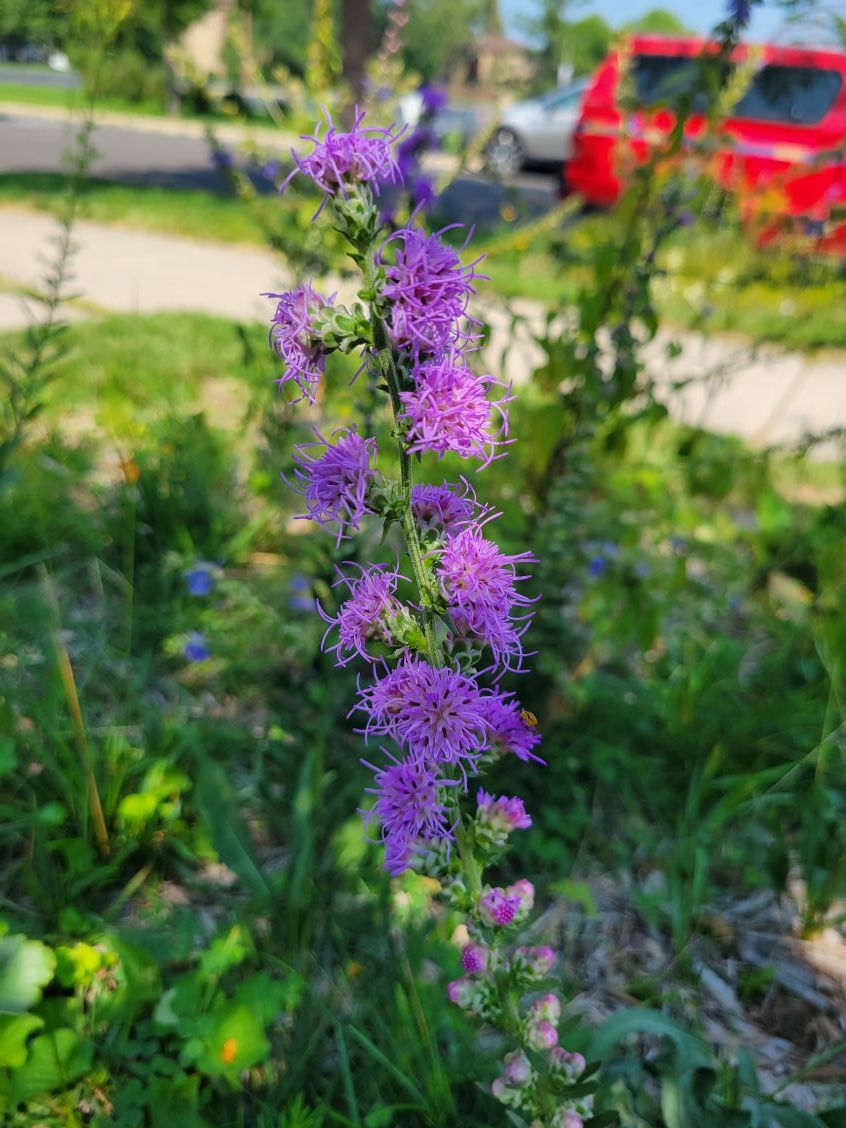Plant of the Week: Meadow Blazing Star
posted
Written By: Engineering Conservation Crews
The prettiest corndog you will ever find in a native planting is also considered to be the ultimate monarch butterfly magnet! A summer of native plants wouldn’t be complete without mentioning the meadow blazing star (Liatris ligulistylis).
This species blooms from late summer to early fall just in time for the monarchs preparing their long migration south. This mutually beneficial relationship has evolved over generations and is one of the best examples of native plants and pollinators being deeply dependent on the other. This Liatris is loaded with bright purple bulbs that reach for the sky on tall stems, making it easy for us humans to view these butterflies feeding. If you catch one in full bloom, it isn’t uncommon to see multiple monarchs on one plant. Meadow blazing star lends a vertical accent to perennial borders and can grow up to 5’ tall in full sun and well-draining soil. For you gardeners and stewards of nature out there, this species may not bloom in the first year if planted from seed, so don’t be discouraged if you aren’t seeing this ladder of color right away. Furthermore, it must be understood that this is a nectar plant, not a host plant for monarchs. Meaning they won’t lay eggs on them, so it still important to grow some type of Milkweed plants nearby. The height of this species can also cause slumping issues, so we suggest planting native clump forming grasses to aid in stability. These include species such as little blue stem, prairie dropseed, or sedges like brown fox sedge.
Each week during the growing season, the Engineering Division focuses in on a Plant of the Week to raise awareness of different plants in the field that benefit our environment. The Engineering crews in the field tasked with conservation share expert insight on these plants and their benefits each week in a creative way!

